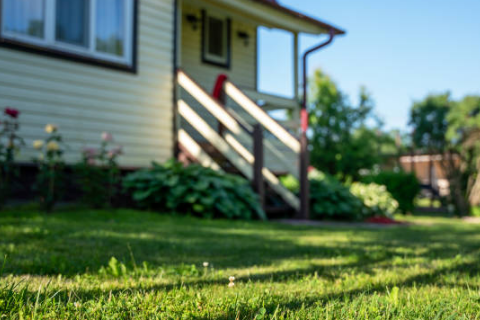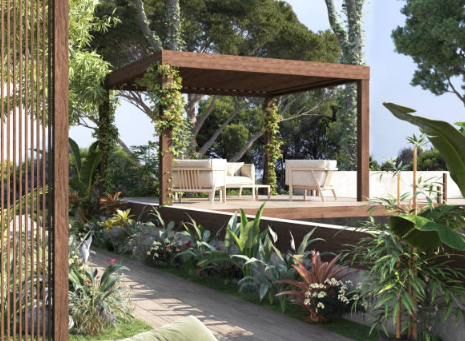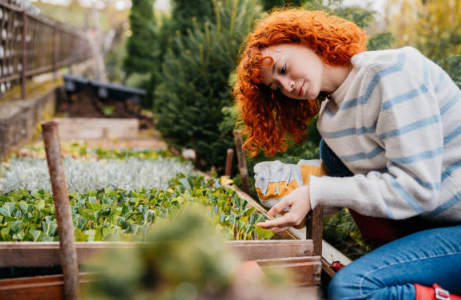When the days are sweltering and the cicadas are buzzing nonstop, nothing feels better than a cool breeze and a crisp cucumber. If you’re lucky enough to have a garden with a shady pergola, it’s the perfect place to escape the heat and relax while watching your plants thrive.
But let’s be honest—summer can also be the trickiest season for plant care. High temperatures can stress your garden just as much as they stress you.

💧 Watering
Summer heat causes plants to lose water rapidly due to increased metabolism and transpiration. Without proper hydration, they wilt quickly. But watering in summer requires technique, not just enthusiasm.
-
If your plant looks wilted, don’t immediately drench it. Sudden heavy watering can cause root rot. Instead, water gradually—start with a light amount and build up to a thorough soak.
-
Micro-sprinklers or drip irrigation are ideal. They ensure even, deep watering and improve plant absorption without damaging flowers or leaves.
-
Avoid watering from above, as it can cause blooms to fade faster and lead to disease or collapse.
Best watering schedule:
-
Twice a day during heat waves—before 10 a.m. and after 5 p.m.
-
Never water at noon—the temperature contrast between hot soil and cool water can shock roots and hinder water absorption.
You can also mist around plants to boost humidity and lower the temperature safely.
Pro tips:
-
First watering should be deep to promote root growth.
-
Avoid overwatering—excess water can cause root rot.
-
Mulch the soil to keep roots cool and moist.
-
Loosen the soil before watering to help water seep deeper.
-
For smaller plants, expand the planting hole slightly to help them absorb water more efficiently.
✂️ Pruning
Pruning in summer isn’t just about looks—it supports plant health and growth.
-
Why prune? To shape trees, balance nutrient use, remove weak shoots, and encourage flowering and fruiting.
-
When to prune? Summer pruning should be done early in the season. Late pruning can trigger new shoots that waste nutrients and weaken the plant.
-
Summer/fall bloomers like pomegranate, hibiscus, hydrangea, and crepe myrtle benefit from pruning before blooming. In winter dormancy, cut back branches to encourage strong spring growth.

🌿 Fertilizing
Even though spring and fall are the prime seasons for feeding, summer fertilizer matters too—especially for plants with active summer growth.
-
Fast-growing plants: Fertilize every 10–15 days.
-
Slow growers: Once a month is enough.
-
Acid-loving plants: Apply aluminum sulfate (or similar) every 2 weeks—don’t get it on the leaves, which can cause burns.
Fertilizing tips:
-
Evening is best, after the heat of the day.
-
Loosen soil lightly before fertilizing to help nutrients penetrate.
-
Water the next day to dilute excess fertilizer and help the plant absorb it properly.
🌱 Weed Control
Weeds aren’t just eyesores—they steal sunlight, water, and nutrients, and attract pests.
-
Types to watch for: Grasses, sedges, and broadleaf weeds like chickweed and plantain.
-
These can harbor aphids, spider mites, and fungal spores that spread disease across your garden.
Weed strategy:
-
Remove weeds early and often.
-
Target high-risk zones: around tree bases, lawn edges, between paving stones, and shady corners.
-
Combine manual weeding with safe herbicides if needed.

🐛 Pests & Diseases
Prevention and early treatment are key to controlling summer outbreaks.
-
Spraying: Apply pesticide in a fine mist, covering inside to out, top to bottom, front and back of leaves.
-
When to spray: Pick calm, dry days—never during rain or high noon heat.
-
Pet safety: Keep animals away from the area, and cover fish ponds before spraying.
Advanced techniques:
-
For tall trees or boring insects, use trunk injections.
-
Spray fungal treatments during spore germination or early infection.
-
For underground pests, dig 2–8 inches deep carefully, avoiding root damage.
-
Physically remove pests like scale insects or bark rot—sanitize wounds and burn affected debris to prevent reinfection.
With the right strategy, your garden can stay lush and full of life all summer long. Consistent care and seasonal adjustments are the key to a thriving backyard oasis.

